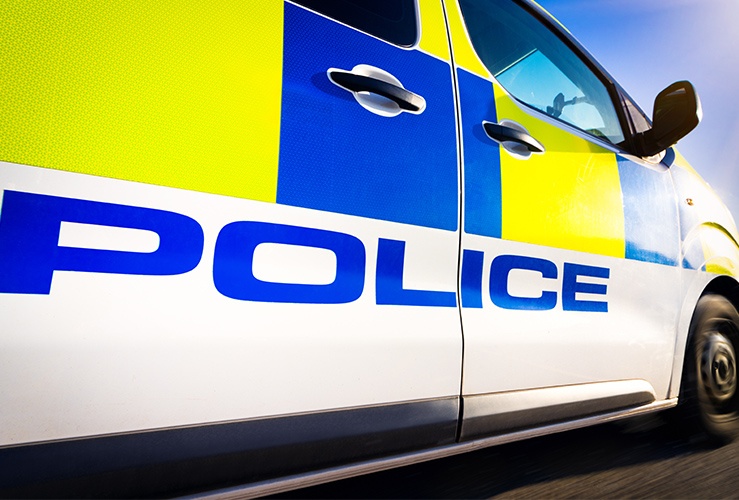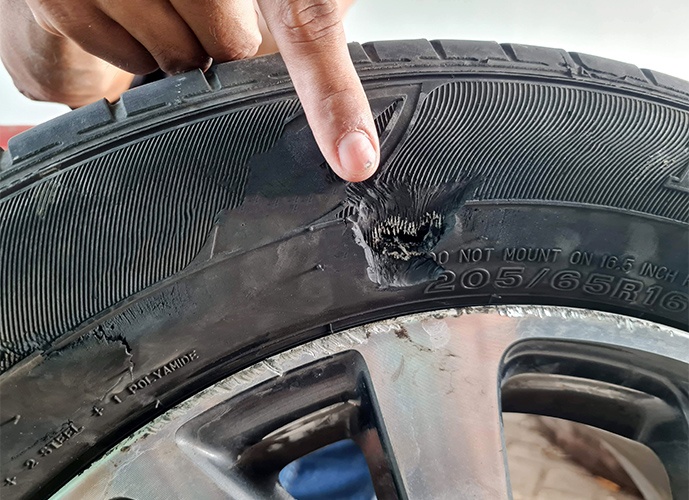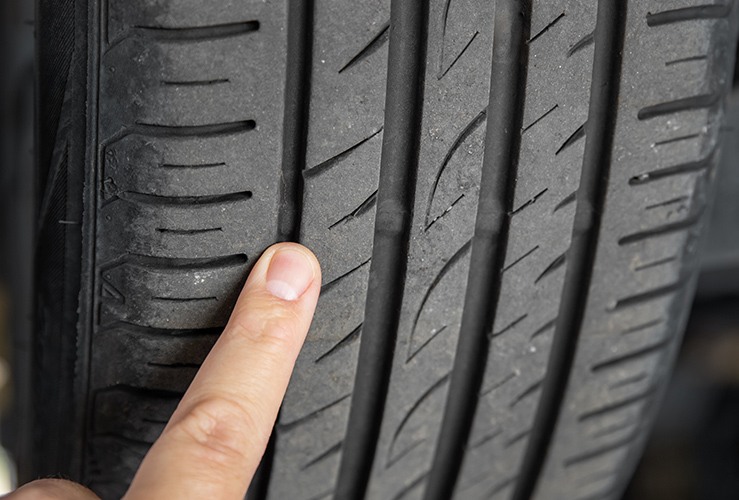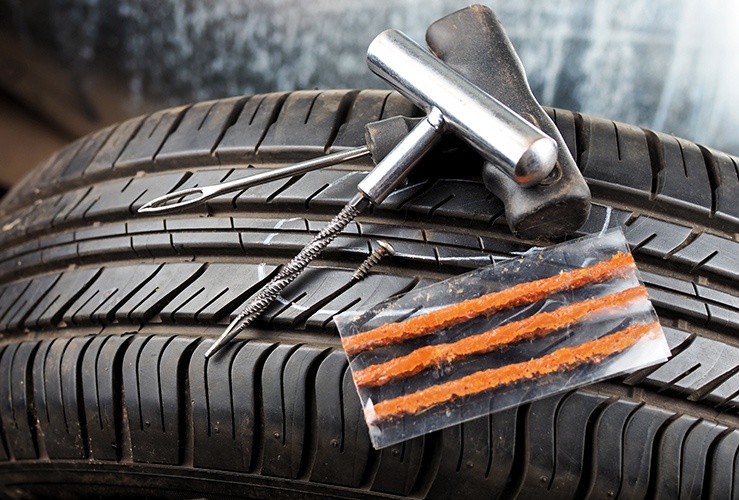Opting to repair - rather than replace - a tyre is understandable, particularly given the rising cost of motoring. However, some kinds of damage could put you and your passengers at risk, and replacement may be the only option. Read our guide to work out if your damaged tyre is repairable.
Tyres aren’t cheap. Even a budget tyre, with labour, will set you back £100. A mid-range tyre could cost £120 or more to replace, while some premium tyres can deflate your bank balance to the tune of £200 - or more.
With these costs in mind, it's understandable that you want to repair rather than replace whenever possible. But what makes a tyre unrepairable? And what kind of damage can be repaired?
All manner of sharp and pointy objects can penetrate tyres - from nails and screws to collision debris lying on the road. Despite being robustly made, with steel reinforcement in the central section, it’s surprising how easily modern tyres can be punctured.
Can you repair a punctured car tyre?
As with so many things in life - it depends. In short, if the damage occurs in the central 75% of the tyre, a repair is usually possible. If it occurs in the shoulder area or the sidewall, you should get a new tyre fitted as soon as possible.
Manufacturers state that you can only repair the central 75% of the tyre. This is echoed by BS AU 159 - the standard for tyre repair in the UK (more on this below).
Can car tyres be repaired if there’s shoulder damage?
A lot rides on your (tyre’s) shoulders. Tyre makers essentially regard the shoulder - the section between the central 75% and the sidewall - as part of the sidewall, or at least, as vulnerable as the sidewall.
However, parts of the shoulder are actually reinforced with a steel belt, while the actual sidewall is usually just rubber. With this in mind, some owners may be tempted to repair damage to the shoulder, especially if it's close to the central 75%. That said, you must always go by the recommendations laid out by the manufacturer, because safety is paramount.
What’s the BS AU 159 standard?
In addition, no garage will take the risk of repairing damage to this borderline area - chiefly because of BS AU 159 Standard: This is the British standard for tyre repair. It specifically prohibits repairs outside the central 3/4 of the tread - which excludes the sidewall and much of the shoulder area. Affecting such a repair could put people at risk and could come with legal ramifications for the garage (and you).
You can learn more about the BS AU 159 standard from the British Tyre Manufacturers’ Association.
Can car tyres be repaired if the sidewall is damaged?
Your tyre’s sidewall is unreinforced - unlike the central area and flat part of the shoulder zone. This means that if an object pierces the sidewall, it will compromise its structural integrity, which would put you, your passengers, and other road users at risk.
Why driving with a damaged sidewall is a very bad idea
A damaged sidewall could lead to a blow out, which is when there is an explosive loss of tyre pressure. If this happens, it would be very difficult to control your vehicle, potentially leading to a collision, with all the risk to human life that entails. Unlike a slow puncture, as tends to occur in the central 75% of the tyre, a blow out (often related to sidewall damage) is immediate.
Common causes of blowouts:
- Sidewall damage (bulges, cracks, cuts)
- Underinflation (too little air = more heat & flex)
- Overloading the vehicle
- Hitting potholes, kerbs, or debris
- Old or worn-out tyres (weakening rubber and cords)
In most cases, there would be signs that a blow out could occur - namely visible damage to the sidewall. This is why it’s so important to inspect your tyres on a regular basis.
When should you check for tyre damage?
- At least once a month
- Before you embark on any long trip
- After a tyre has hit something - be it a kerb, a pothole, or road debris
Tyre replacement: what to look for:
- Sidewall damage: Cracks, bulges, cuts
- Tread wear: Is it uneven or below the legal limit (1.6mm)?
- Objects stuck: Nails, glass, or sharp debris
- Tyre pressure: Use a gauge or your car’s TPMS (if fitted)
- Age: Even if unused, tyres older than 6 years can deteriorate

What are the penalties for driving with damaged or worn tyres?
Here’s a handy table that shows the very serious consequences of driving with damaged or worn tyres on UK public roads.
Offence | Penalty |
Tyre below legal tread depth | £2,500 fine per tyre, 3 penalty points |
Visible tyre damage | Same as above - applies to sidewall cuts, bulges, cords exposed |
Mixing incompatible tyres | (e.g. cross-ply with radial) - Fines + points |
Unsafe condition overall | Possible charge of driving a vehicle in a dangerous condition |
All 4 tyres illegal | Up to £10,000 fine and 12 points (i.e. disqualification) |
Why fitting an old but unused tyre is a no-no
If you have a spare tyre that has not been used before, but is more than 6 years old, it should not be fitted. This is because tyres break down over time, due to factors like exposure to oxygen, ozone, heat and UV light. Older tyres can be brittle and lack flexibility - both of which could spell problems down the road - namely an inability to deal with strikes (kerbs, potholes etc.) potentially causing punctures and deflation.
Can you fix a tyre with a nail in it?
Yes, it’s possible to fix a tyre with a nail in it, but only if the damage is in the central 75% of the tyre.
Additionally, the puncture must not be more than 6mm wide, and there must be no internal damage. As The Motor Vehicle Tyres (Safety) Regulations 1994 state: “The tyre must not have… any of the ply or cord exposed internally or externally.”
And of course, the rest of the tyre must be in good condition (no bulges, cracks etc.).
How would I know if there’s internal ply/cord damage?
Since it’s impossible to see the inside of your tyre from the outside, it's not easy to determine if there’s any cord/ply damage. However, clues that you may have internal damage include:
- You’ve driven on it while flat or underinflated
- Visible bulges or bubbles on the sidewall
- Irregular or uneven tread wear
- Soft spots or distorted tyre shape
- Unusual vibrations while driving
If you suspect your tyres are no longer in good working condition, have them looked over by a professional - promptly.
Can you repair a tyre with a screw in it?
The same principles apply when repairing a tyre with a screw in it. However, because screws are threaded, they may cause more damage than nails, which tend to go smoothly through the rubber.
In particular, cords can be more easily damaged by the threading in screws.
Here’s a table to show the differences between nail and screw damage:
Feature | Nail | Screw |
Shape | Straight, smooth shaft | Threaded, spirals into rubber |
Entry pattern | Usually pushes straight in | Often twists in, causing more tearing |
Damage type | Clean puncture | Can cause wider or spiral tears |
Removal risk | Less disruptive to remove | Removing a screw can worsen the damage |
Sealing potential | Often easier to patch/plug | More likely to cause irregular holes |
When can a puncture not be repaired?
The following table gives you an at-a-glance list of the kinds of damage that make tyre punctures/damage unrepairable. Safety is of course paramount, which is why it’s important to replace tyres if any of these signs are evident - even if you think the tyre could be repaired.
At-a-glance: When can a puncture not be repaired?
Reason | Explanation |
Too close to the sidewall or shoulder | Repairs are only permitted in the central 3/4 of the tread. Edge punctures are unsafe. |
Hole is larger than 6mm | Bigger punctures can't be sealed reliably and compromise tyre integrity. |
Internal damage is present | Damage to the ply, cords, or inner liner makes the tyre structurally unsafe. |
Tyre was driven on while flat | Driving on a flat can cause invisible sidewall or structural damage. |
Tear or gash instead of a clean hole | Jagged or split damage can’t be sealed with standard plug/patch repairs. |
Multiple punctures close together | Weakens the tyre too much in one area — risk of failure remains. |
Tyre is old or excessively worn | Worn or aged tyres may not hold a repair and could soon fail elsewhere. |
Run-flat tyre driven on without pressure | Once driven deflated, run-flats are often considered unsafe to repair. |
How to fix a nail or screw puncture?
Below are the three most common forms of tyre repair - effective for both nails and screws. However, do note again that screws can cause more damage than nails, so be sure that repair is the best option: if the damage is too severe, you'll need to replace the tyre altogether.
The safest option is number 3 - combination plug-patch. It meets the BS AU 159 standard but must be done by a professional - which will add to the cost considerably. But one cannot put a price on safety.
1. Plug Repair (External)
- What it is: A rubber plug inserted from the outside, sealing the hole.
- Used for: Quick, temporary fixes.
- Pros: Fast and cheap.
- Cons: Not as reliable long-term; doesn't seal internal damage.
- Best for: Emergency use or temporary fix to get to a garage.
2. Patch Repair (Internal)
- What it is: A flat rubber patch is applied to the inside of the tyre after removing it from the rim.
- Used for: More permanent repairs of small punctures.
- Pros: Seals from the inside; safer than plugs alone.
- Cons: Requires tyre removal and professional fitting.
- Best for: Small nail holes in the central tread area.
3. Combination Plug-Patch (Mushroom Plug)
- What it is: A two-in-one fix — a plug fills the hole and a patch seals the interior lining.
- Used for: Gold standard of puncture repairs (meets BS AU 159 standard in the UK).
- Pros: Seals both inside and out; durable and safe.
- Cons: Must be done by a professional.
- Best for: Safe, long-term repair of eligible nail punctures.
My tyres look fine: Should I still replace them if they’re old?
If your tyres are older than six years, they should be replaced - even if they look like they're in good condition. As mentioned, oxygen, ozone, heat and general friction can degrade tyres - often in ways that aren’t visibly obvious.
Once your tyres are 5 years old, they should be inspected by a professional.
Conclusion
Nobody likes a hefty garage bill, but it’s important to repair or replace any tyres that are no longer roadworthy - as soon as possible. In particular, do not continue to drive if you notice any bulging, cracking, or any cuts or gashes over 6mm. And any sidewall damage means that tyre replacement is your only option.








